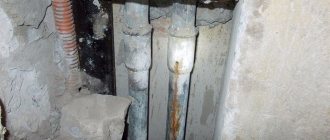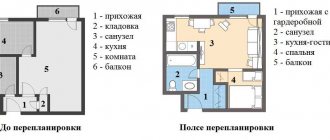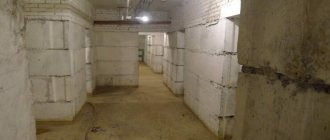As you know, on the modern market there are many types of all kinds of heating devices with which you can effectively heat your own apartment. But the greatest demand and popularity is for autonomous heating of apartment buildings. A huge number of positive qualities and properties, as well as amazing characteristics and colossal savings - these are the factors that shape modern public opinion.
Competent autonomous heating of the apartment
Independent installation
Naturally, before heating your apartment, you need to stock up on consumables and various tools.
In particular, this is useful:
- tow and silicone for sealing some joints;
- various fittings (adapters, angles, etc.), fasteners and dowels;
- plastic scissors;
- wrenches, screwdrivers (phillips and simple) and a hammer;
- pencil, tape measure, building level;
- upholstery cord or construction thread - these items are necessary for marking a line along the perimeter of the walls along which the main line of pipes will run;
- perforator and drill with a diameter of 6 mm;
- soldering iron for plastic.
Let's assume that the tools and materials are available. This means it is possible to proceed to the first stage.
Radiator installation
Everything is done according to approximately this scheme:
- Using a hammer drill, holes are drilled for hooks for bimetallic radiators. At the same time, make sure that between the holes there is as even a horizontal line as possible - use a level if you do not want the battery to hang crookedly.
- The hooks are driven in or screwed into the dowel until it stops.
- The radiator is hung on hooks.
The work is simple and simple, but it is fundamentally important to know about several nuances
- There should be a distance of at least 5 centimeters between the window sill and the top line of the radiator. If everything is “back to back”, there will be no high-quality upward air circulation.
- Make sure that the hooks in the dowels are seated as firmly as possible. If the fasteners hold loosely, then during pressure changes the battery may vibrate and simply “move away” from the wall.
We continue to do the heating of the apartment with our own hands - we move on to working with pipes.
Soldering the line and connecting to batteries
Essentially, it is necessary to create a line of two parallel pipes along the entire perimeter of the room. This will be the coolant supply channel and the so-called “return”. It turns out that the line will be connected to the point where the outlet from the central heating pipes is installed.
And in those places where a connection to radiators is required, tees will be built into the non-specialized pipeline, from which vertical sections of pipes will be installed. And the fittings connecting the system and batteries will be attached to the ends of these sections.
Everything is done quite simply.
Turn on the soldering iron and wait for min.
15 – it is fundamentally important to wait until it warms up well. Otherwise, the plastic will not melt as needed during soldering
We take the ends of the pipes and put them on the soldering iron nozzles. We wait about 4 seconds, remove the plastic from the nozzles and thread the pipes into each other. When inserting, it is imperative to make a certain effort so that the adhesion of the adhesion points occurs as effectively as possible.
- In places where radiators are installed, we solder fittings and tees into the pipes. Naturally, they must be placed on both the supply and return lines.
- In a similar way, we go through the entire perimeter and connect through fittings to the points of the central pipeline.
Now you need to connect the radiators to the main line.
To do this, we cut off pieces of pipes of the required height - the ends of these sections, and tees, must be melted with a welding gun and connected to each other.
Then we attach corners to the end of each vertical “rack”. We weld very small sections of pipes horizontally to these corners (their length should be exactly enough to reach the radiator holes).
And at the ends of these segments you need to solder fittings with the so-called “American ones” - these connections will be twisted specifically with the batteries.
Don’t forget that proper heating installation in an apartment requires that a coolant supply shut-off valve must be installed for each heater. And this, by the way, is done not only to eliminate emergency situations, but also for comfort and efficiency.
The fact is that with the help of such taps it is possible to regulate the power of the coolant flow, which allows you to regulate the temperature regime for one or another battery. Well, it goes without saying that the tap can be completely turned off in those rooms that, by and large, you do not want to heat.
After the pipeline is installed, it is necessary to perform a test run of the system and carefully check all connections for leaks. If everything is in order, then the system can be used normally.
This is the scheme of work. Now let's summarize the article.
Autonomous heating in an apartment: is it possible to install it yourself?
It must be said right away that the owners of an individual apartment will not be able to switch to individual autonomous heating in their apartment legally on their own due to the ban that has been in effect since 2007. Before this date, almost everyone who did not have debts on utility services received permission to be an “individual” from the relevant council.
Such a massive rejection of municipal heat led to the destruction of the central heating system both in individual houses and in the country as a whole, and therefore significant restrictions were introduced on the establishment of individual (apartment) or autonomous (in a house or part of it (entrance)) heating.
Such a restriction and the corresponding procedure for consumers to refuse centralized heating and heat supply at the legal level are regulated by Order of the Ministry of Regional Development dated July 26, 2019 No. 169, which approved the “Procedure for disconnecting consumers from centralized heating and hot water supply systems.”
The opportunity to refuse centralized heating and hot water supply is provided for by the Law “On Housing Services”, which came into force on May 1, 2021. The rules for the provision of services for the supply of thermal energy (Resolution of the Cabinet of Ministers dated August 21, 2019 No. 830) establish that disconnection of consumers from centralized heating (heat supply) systems is carried out by decision of the co-owners of an apartment building. By decision of the meeting of co-owners of an apartment building, a system for further providing such a building with heat supply is determined in compliance with the requirements of legislation on environmental protection.
Moreover, in apartment buildings in which, on the day the Law “On Housing Services” came into force (December 10, 2017), at least half of the apartments and non-residential premises are separated from these networks, the owners of apartments and premises connected to such networks are not obliged , but have the right to turn off their apartment and install an individual heat supply system (heating or hot water supply). Forced shutdown is not permitted.
How many approvals do you need to collect?
For individual heating, the apartment needs to be redesigned. Both the destruction of walls and partitions and their construction consist of a labor-intensive process.
It will take a long time to receive each completed paper. It is necessary to take into account installation work and the purchase of materials, so reconstruction begins with the preparatory stages:
- determined with the collection of a documentary package;
- develop a project;
- purchase equipment;
- install an autonomous system.
What legislation regulates individual heating in an apartment building? The regulation for any redevelopment is the Housing Code of the Russian Federation, Article 26.
The reconstruction of residential premises is carried out according to technical requirements; each stage of work must be agreed with the local government. To contact the regional authority, you need to collect documents that will serve as an appendix to the main application.
General documentary support for the submitted application, filled out according to the standard form:
- title documentation - this can be a certificate of ownership, transfer of an apartment by inheritance, a purchase and sale agreement;
- photocopy of technical passport;
- redevelopment of an apartment in the project;
- information about all registered persons in the residential area;
- written notarial consent of each registered person;
- confirmation that the building is not an architectural monument.
When the administration receives a documentary kit, they issue a receipt of its receipt with a detailed list.
The papers will be sent to the commission for approval, the body will review and make a decision within a month. The document will be sent to the applicant for review.
Redevelopment may be refused if it worsens the condition of the house or threatens the safety of residents.
Project documentation for autonomous heating is coordinated with authorized organizations from the field of gas and heat supply.
To disconnect the heating circuit in an apartment from the general system, you need to obtain permission from the city or regional heating networks.
Specialists of this level will agree to an agreement provided that the installations do not disrupt the functionality of the building's utilities and equipment.
Only a security threat can lead to the refusal of a request for heating autonomy. Applications for an individual heating system are accepted by the housing management organization.
Actions consist of the following steps:
- receive a consent letter;
- contact the gas service;
- receive technical specifications;
- take apartment property documents;
- order a project;
- purchase equipment that meets the specifications.
SNiP41-01-2003 contains the basic requirements for heating and ventilation devices. You can be exempt from registration by concluding an agreement with an organization that provides such services.
Scenario for the second case
Thanks to the warm climate, heating can be economical. As for safety and convenience, the leadership here belongs to electric heating in the apartment - autonomous heating in this case will be expensive, since electricity costs are very high.
The reason is not only the high cost of electricity, but the fact that direct heating is an inefficient use of it. The solution to the problem was found a long time ago - these are heat pumps. These devices spend power not on heating the air, but on pumping thermal energy from a source with low potential. As a result, costs are reduced by 3 to 5 times compared to direct heating.
But in an apartment it will not be possible to organize the use of thermal energy from an ice-free reservoir or geothermal heat. But you can get heat from the surrounding airspace. Air-to-air pumps are capable of ensuring efficient operation of the heating system.
System installation
First of all, you need to make markings - mark where the pipes will go, where the radiators will be mounted. And do not forget that it is advisable to hang the batteries at the same level - this is easy to do. Simply make marks for the first radiator and transfer these points under each window using a water level.
Water level
If everything is ready, then you can attach the batteries to the wall. Here we need a hammer drill, dowels, a hammer and battery mounts. The scheme is simple: we make holes in the wall at the required points, fix them to the wall with fastening dowels and hang the radiators on them.
Now you need to calculate how many pipes you need and what length, and then prepare them.
Screwing fittings to the radiator
It is best to start assembly from the point of hot water supply to the system, as well as from the beginning of the so-called “return”. As a rule, there is no need to solder in these places, because there will most likely be threads on the steel pipes to which you need to screw the appropriate fitting. But the fittings themselves need to be welded to the plastic pipes with a soldering iron.
Possible diagrams of the heating system will help with the question of how to install heating in an apartment
When this is done, you can solder the entire circuit of water supply and outlet pipes around the perimeter of the apartment.
After this, all that remains is to solder pieces of pipes that will go to each radiator to the common lines in the right places, then weld an angle tap to the end of each piece with a soldering iron and connect the radiators and pipes.
Angle valve for plastic pipe
That's it - the heating system is ready!
As you can see, the instructions and principle of assembly are, in general, simple, the main thing is to follow the specified installation sequence - radiators are almost always attached first, and only then, relative to their position, a line of pipes is assembled.
And finally, let’s touch on one optional, but important point...
Think, perhaps it makes sense, when installing heating in an apartment, to also install a water heated floor system? This is, of course, an additional cost, but the effect will pleasantly surprise you. The apartment will not just be warm, but heat exactly where you need it!
Warm floor made of metal-plastic pipes
Such a system consists of metal-plastic pipes - on our website there is a video on how to make it, watch it, you may find this information useful.
Well, now let's summarize.
Advantages
Frequent reasons why people decide to install an autonomous heating system are:
- Heating quality. Not all residents of an apartment building may be satisfied with the temperature level in the premises and discomfort in the off-season.
- I would like to independently control the supply of thermal energy.
- There is an opportunity to save on utility bills.
How to make individual heating in an apartment? You will have to dismantle the old pipes and batteries, install new ones and connect them to the heating boiler.
Boiler equipment will heat the water and circulate it through all pipes. Thus, the apartment will be filled with warmth. Hot water can also be connected to the boiler.
Individual gas heating in an apartment with a turbocharged boiler
Types of decentralized heat supply
Another example of autonomous heating of a multi-storey residential building is a block boiler room, consisting of a separate module. Block or modular boiler rooms can be transported because they are delivered in the form of containers.
The use of modular boiler rooms in an apartment building. Click to enlarge.
Their implementation does not require the construction of a new building specifically for boiler equipment - the entire installation is already “enclosed” in a container, moreover, the module is thermally insulated, and assembly is carried out directly at the manufacturer.
Previously, such blocks were used as heating systems for temporary structures (cabins), but now they are offered (after a number of modifications) as an alternative to centralized heating.
But the best option for autonomous heating is an apartment-by-apartment heating system powered from the main gas pipeline or through the power supply network (depending on the type of boiler), the “core” of which is a wall-mounted boiler (gas or electric).
Why wall-mounted? Because wall-mounted boilers have a number of advantages:
- Easy to install, easy to hang on the wall using a set of fasteners (fasteners must be supplied with the boiler equipment)
- They are light in weight and small in size, do not take up much space in the room
- Given their size, they have good power (10-25 kW) and are able to heat a room up to 100 m2 - and this is quite enough for one four-room apartment
- Available in both single- and double-circuit
If the apartment owner plans to install a wall-mounted gas boiler as heating equipment, then he should check the completeness of the equipment, namely:
- Boiler with two circuits (working for both space heating and domestic hot water)
- Combustion chamber – closed type
- The presence of a fan to provide forced draft (intake of fresh air from the street) and removal of combustion products through the chimney pipe
- Pump for forced circulation of coolant
- Electronic ignition and full automation – for rational use of fuel
In the case of an electric boiler, which also operates according to a dual-circuit scheme (heating + providing the consumer with hot water), there will be much fewer difficulties: you will only have to obtain permission to allocate an additional power supply line, plus coordinate the insertion of forward and return pipes into the general water supply system.
The only exceptions will be electrode boilers without heating elements, which work to heat running water.
Gas heating in the apartment
Such a system represents a closed circuit with coolant circulating inside. A gas-fired boiler is used to heat the liquid. It can be single or double circuit. It all depends on the needs of the people living in the apartment. As you know, gas boilers can be floor-mounted or wall-mounted. For apartments, the second option is chosen.
These are compact, but at the same time quite powerful devices. For an apartment, you should choose a heating device with a closed burner. Such devices do not take air from the room and do not require a traditional smoke exhaust system.
The latter is not always possible in an apartment building. Boilers with turbocharging require a special type of chimney, which is quite easy to install.
What benefits does the owner of gas heating receive? First of all, it ceases to depend on the timing of the heating season. The boiler is ready for use at any time and can be started as needed.
The cost of fuel is relatively low. Compared to heating with electricity, for example, operating a boiler will cost much less. In addition, if you install thermostatic valves on the batteries and purchase a heating unit with automatic control, you will be able to save on its operation.
In new buildings with individual heating of apartments, the problem of removing smoke from a gas boiler can be solved in this way: the picture shows the pipes through which street air is supplied to the burner. The smoke is discharged into the central smoke exhaust shaft
This is explained by the fact that the automation will regulate the temperature in the rooms, selecting the most economical operating mode and turning off the equipment when the set temperature is reached. It will not be possible to do this “manually” even if you want to.
The advantages include the compactness of gas heating equipment, its high efficiency and quite affordable cost. The solution also has disadvantages. The most obvious are related to the potential dangers posed by gas heating.
The owner of the apartment will be required to obtain a package of permits for the installation of gas equipment. However, you need to understand that it will be received only if the apartment fully complies with safety requirements. The purchased equipment must be certified.
Installation, connection and subsequent maintenance should only be carried out by specialists. In general, gas equipment should be handled extremely carefully and no amateur activity, be it a self-made part for the boiler or self-repair of the device, is unacceptable here.
Gas equipment is considered potentially dangerous. It must be handled with extreme care. Its maintenance, installation and repair should only be carried out by certified specialists
Disadvantages include the energy dependence of the system, which will not work without electricity. Despite the shortcomings, practice shows that gas heating is becoming the most common choice among apartment owners.
It allows you to get maximum cost savings and at the same time get efficient heating of your home. The possibility of parallel arrangement of hot water supply makes this solution even more attractive.
Energy carrier type
There are several ways by which they abandon the services of state-owned enterprises and move on to individual services. First you need to consider all the options and choose the best one. The choice will directly depend on the type of energy that is used to heat residential premises in an apartment building.
Gas
The most popular resource in our country. A gas heating system has many advantages:
- multi-level equipment protection system and the ability to maintain a stable temperature regardless of gas pressure;
- silent compact boiler that does not require much space for installation;
- there is no need to install a chimney;
- affordable price that will suit most residents of city apartments.
Modern gas boilers are equipped with an electronic control system and meet all safety requirements.
Their only drawback is the combustion of oxygen, but this can be easily eliminated by basic ventilation.
Electricity
An alternative to gas heating of a home can be a system with an electric heater. Electrical energy is instantly converted into heat, so you can do without additional coolant.
This method is characterized by environmental friendliness, noiselessness, ease of installation and ease of operation. The dimensions of the equipment are also compact, so it will not clutter up the room.
The disadvantages include high costs for consumed electricity and complete dependence on its supply.
On what basis are they refusing?
Local executive authorities do not always satisfy requests for the conversion of apartments with heating systems. In judicial practice there are reasonable responses to refusals in proceedings in this area.
Citizens are turning to district courts with statements of claim in which they complain about the decisions of the construction and major repairs departments refusing to renovate and remodel apartments.
Residents did not want to be connected to central heating; they considered it more economical to use an autonomous gas boiler.
The reason for the refusal is in the design of the houses; it does not provide for such heat supply. The building diagram shows that it is impossible to disconnect a separate apartment and completely solve the issues of technical support for individual places in the house with general building communications that are developed in the project.
Permission for individual heating of an apartment
The refusal of central heating must be formalized before the start of work, since it is directly related to the central heating system of the building. The transition from general heating to individual heating includes changing utilities, moving equipment and documenting the procedures performed (new technical passport).
Legal side of the issue
Regulatory documentation for the reconstruction of residential premises consists of 4 art. LCD and several special provisions of the Town Planning Code regarding changes to the intra-house heating system, namely:
- change project;
- permitting procedure;
- issuance of a commissioning certificate;
- other regulatory documents.
The issuance of relevant documentation is supervised by local authorities. Also, taking into account the provision on common ownership of property by the owners (Article 36 of the Housing Code of the Russian Federation), which are all residents of the house, consent to the procedure will be required from them.
Required documents
There are requirements regarding the technical characteristics of equipment that is installed during the transition to autonomous heating. These include permission from Rostechnadzor, necessary certificates, installation instructions, and a conclusion from sanitary authorities.
Along with the application in the approved form, the necessary documents are submitted to local government bodies (Article 26 of the RF Housing Code): a design diagram and a package of technical acts for the installation of individual heating.
Commission decision
The licensing authorities have 45 days to make a decision. If the answer is positive, the applicant receives a document giving the right to carry out measurements, transfer of communications, installation and other procedures provided for in the project documentation.
If the members of the commission made a decision to deny the possibility of switching to autonomous heating, it can be appealed in court.
Required documents
The law states that absolutely any home owner has the right to individual heating and disconnection from the central heating system.
To complete the procedure, the owner must provide:
- conclusion of an engineering company on the technical feasibility of re-equipment;
- written consent of all apartment residents;
- documents certifying the ownership of the apartment;
- technical passport of housing;
- a statement drawn up in free form.
The law also requires the provision of a project as one of the main documents in the package. The project is being developed by water and heat supply engineers.
It is also worth entrusting the project to specialists because, sooner or later, independent conversion will be fixed and dismantled with a return to the central heating center, it is good if this happens before the neighbors below are flooded due to improper wiring, installation or cutting of pipes.
The project is compiled exclusively by specialists who calculate the changes. The calculation determines what impact a future shutdown will have on the operation of the heating system in the house. In addition, specialists carry out thermal-hydraulic calculations and calculations of heat transfer from the riser.








